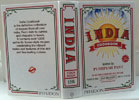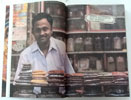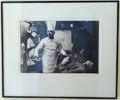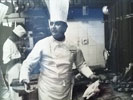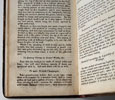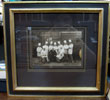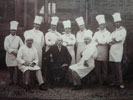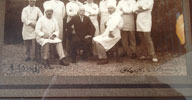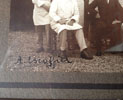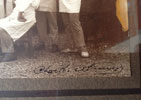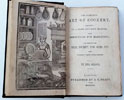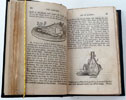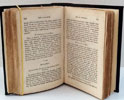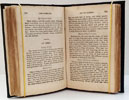Menu du Reveillon, 31st December, 1911.
Carlton Hotel and Restaurant, London. New Years Eve.
286mm x 224mm. With a Great British Empire themed coloured picture on the front. It shows two men, one is a John Bull figure, the other, a Scotsman in a kilt, as well as two ladies representing Ireland and Wales. The dates on two boats prows showing 1911 and 1912. At the top, six little vignettes of famous scenes from countries under the crown. Cardboard cover with four pages. An impressive menu with fourteen items inside. Tied together with multi-coloured cord. A little foxing on the front but not affecting the overall image. A nice item of Escoffier ephemera in good quality paper(for the time).
- Considering this menu is 100 years old it has fared well. Looking thro' Escoffier's 'L'Aide-Memoire Culinaire' of 1910 one can see his dishes on offer for that New Year. His menus from his time at the Carlton Hotel from 1899 - 1919 are very scarce, but when found they give a sense of place and gastronomic history other chef's menus lack.

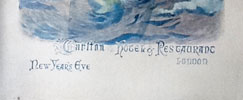

click on image to enlarge

Ephemera category
ref number:
11182 